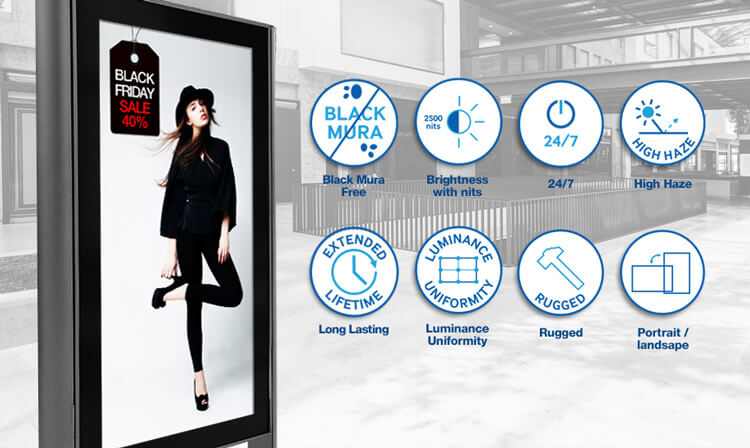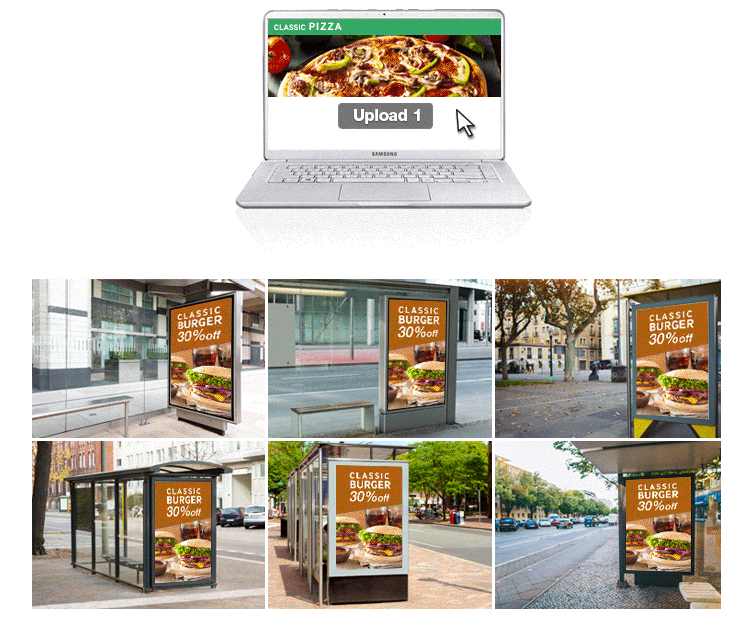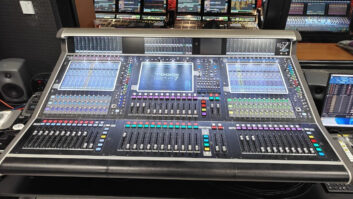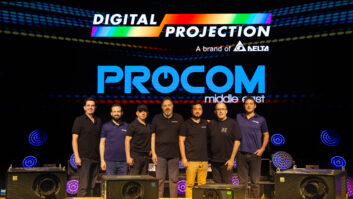
In a new white paper, Samsung offers a comprehensive guide in understanding the costs and financial benefits in deploying digital signage
Examples of digital signs in action are never too far away and can be found in virtually any environment. Even toilets and garbage disposal lorries in and around London now use digital signs for self and external promotional purposes.

It’s not difficult to see why. The benefits, statistically speaking, can be huge. Retail is a great example of where digital signage has been proven to have a direct positive impact on sales. Figures from a recent consumer survey by Nielson on the ‘Effectiveness of Digital Display Screens Installed In Grocery Stores,” showed that four out of five brands saw a rise of up to 33 per cent in additional sales as a result of digital signage.
The same survey also revealed that 74 per cent of those questioned were aware of monitors and displays being used in and around stores.
The Digital Signage Association suggest in some instances suggest sales in retail – broadly – have been seen to rise by between 50 per cent and 300 per cent through the deployment of digital signage.
Other examples within retail environments include benefits around customer service, most notably around the checkout lines, which whilst often frustrating to the user due to oversensitive weight calculations, have been shown to reduce waiting times by up to 40 per cent.

Challenges and understanding
However, according to a new white paper released from Samsung today (December 13), the discussion around digital signage with company stakeholders poses two challenges.
The first is a lack of understanding around the ‘whole’ cost of digital signage solution and secondly, they often fail to recognise the full benefits.
The paper from Samsung, is designed to help end users better understand these details to enable you to build a comprehensive business case based on your needs and benefits, understand the total cost of ownership (TCO) and be able to calculate the ‘real’ ROI of digital signage displays. Highlights include:
Key cost components of digital signage
Uncovering the costs involved in owning a digital signage solution: this includes all the upfront acquisition costs and after-sales costs, which will make up your TCO calculations.
The upfront cost is similar to any display system and most businesses are quite careful when estimating and assessing these. These include the screen, the media player, content development, mounts, cables and installation labor cost. But this is just part of the ‘cost’. One glaring mistake we often notice, especially with first-time adopters, is that they do not factor in the long-term cost of repair and replacement.
We have seen many businesses fall prey to the old saying — “out of sight, out of mind!” If you plan to run the screen more than 12 hours every day or night, you need to ensure a professional grade screen. When businesses overlook this critical aspect, they end up spending a lot more on expensive labor and repair costs. Additionally, a broken signage screen can compromise the customer experience and lead to lost revenue.
Digital signage benefits
Having laid down the costs involved, it’s important to factor in the cost savings digital signage will make possible. Let’s discuss some of the benefits of digital signage to illustrate the approach. If taken advantage of properly, these benefits will offset the costs and help generate incremental revenues.
Higher impact
Digital signage allows for breathtaking, attention-grabbing installations. Whether it’s a still image, dynamic content, or videos — digital displays capture audiences with vibrant colors and powerful, visual messages. Ability to incorporate touch interfaces as well as design flexibility that digital signage offers, you can create a variety of configurations to generate the type of engagement you are looking for.
Statistics show that digital signage drives higher reach, engagement, recall rates, and are highly effective in motivating customers to take action when compared to traditional media:
- Digital signs reach more customers than internet videos
- Increase in ad impressions
- Higher recall rates
- More impact on taking an action

Value
Compared to analog installations and TVs, digital signage delivers far greater value. In contrast with analog billboards, for example, you can deliver a range of messages depending on your business priorities, alternating them as often as you need rather than being stuck with costly and time-consuming billboard updates.
Content flexibility
Businesses often heavily invest in printed materials — maps, signs, menus, agendas, brochures, billboard posters, to name a few examples. All of which need designing, writing, printing and distributing. Digital content is substantially more agile and engaging and is easy to replace or alternate.
Measuring digital signage success
While digital signage brings many benefits to your business, its success needs to be measured in meaningful business outcomes. There are two ways to measure the success of your digital signage:
- Return on Investment (ROI) — calculating how profitable an investment you made is.
- Return on Objective (ROO) – setting a goal and then measuring your success against that goal. ROO is not usually related to money and looks to measure things like customer satisfaction, brand awareness, and customer experience. Find out more about ROO and how to track it here.
Because we are looking at the TCO, we’re going to focus on ROI and explain how it can be calculated. Working out ROI is based on the money you’re making from your investment, the cost of the investment, as well as the amount of money you’re saving from your investment. To put it simply, less cost and more sales amount to more profit.
Calculating ROI
The most accurate way to calculate the ROI of your digital signage is to compare sales data before you had digital signage to your sales now. If you have multiple locations, then you have the great opportunity of setting up digital signage in half of your locations and leaving the other half as they are. If possible, try to compare locations that have a similar yearly profit and footfall so variable external factors don’t interfere with your test.
If you are a small business with one location, compare your sales data in a month without digital signage to a month with digital signage, or even better compare year on year. Again, try to pick two similar months so that variable factors don’t intervene.
Once you’ve decided on your test, track the sales data in both scenarios – ideally year on year to avoid seasonality or certain events affecting the data.
When tracking sales consider:
- Total revenue (cash generated)
- Gross profit (revenue minus cost)
- Net profit (gross minus expenses)
To read the paper from Samsung in its original form, please click here
AV Technology Europe will be publishing extensive content on digital signage – including expert advice and insight from some of the world’s leading manufacturers and content providers and creators – in our next magazine, which comes out in January.
- If you’d like to receive a printed copy, click here
- If you’d like to receive a digital copy, click here
- If you’d like to sign up to our weekly newsletter, click here







